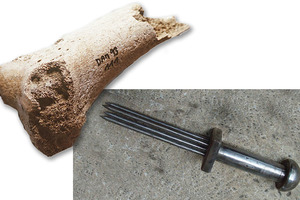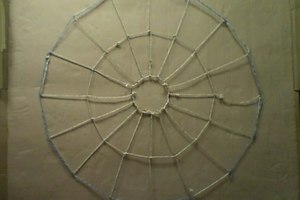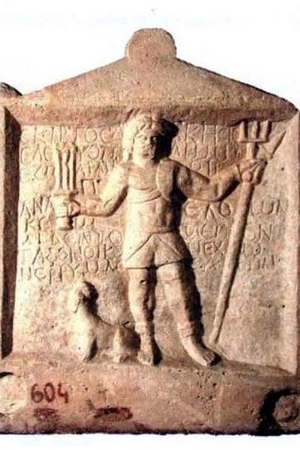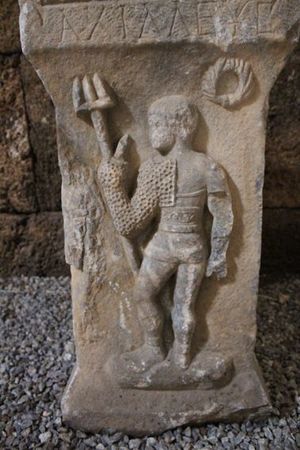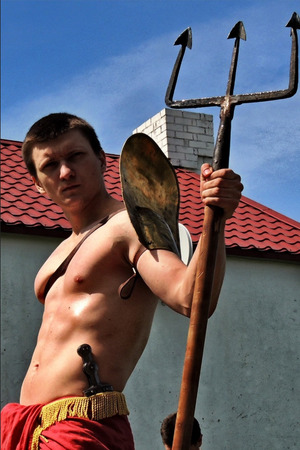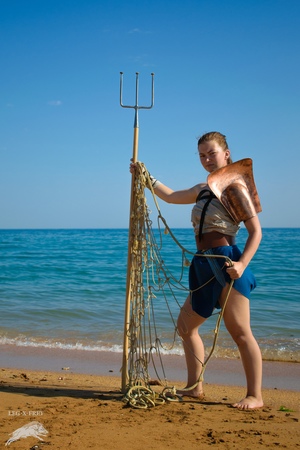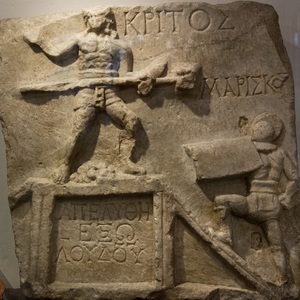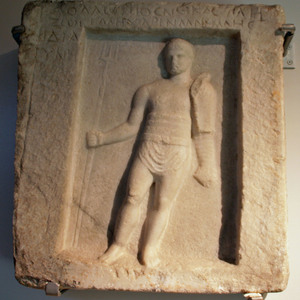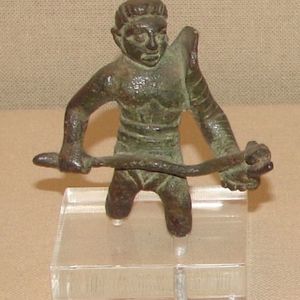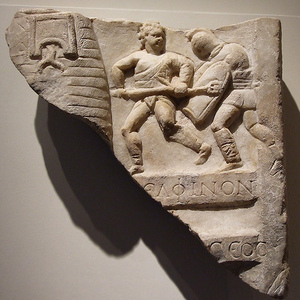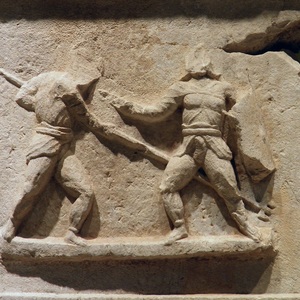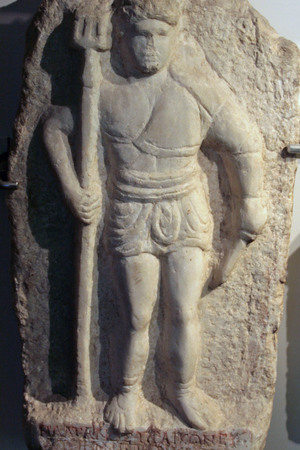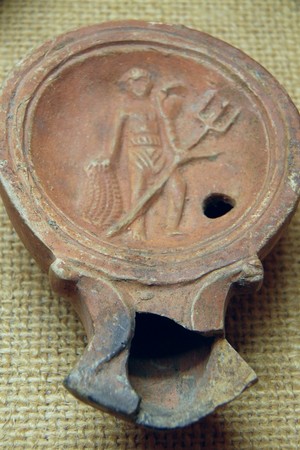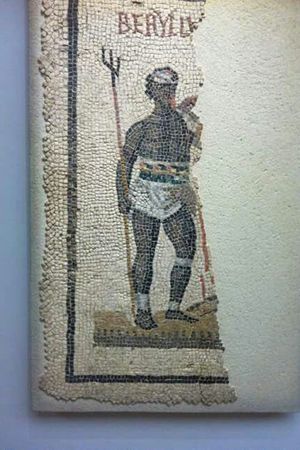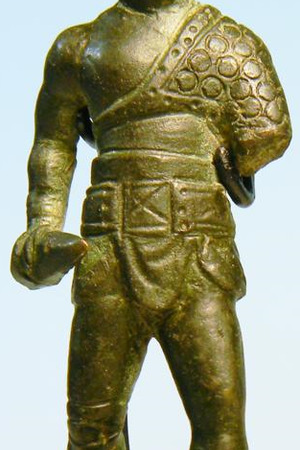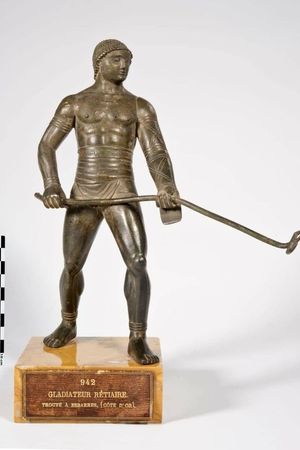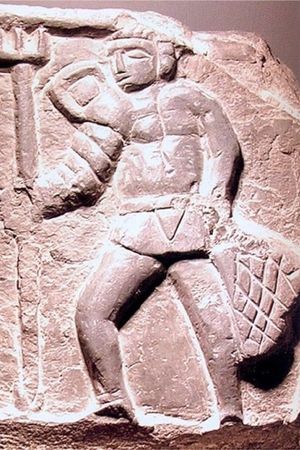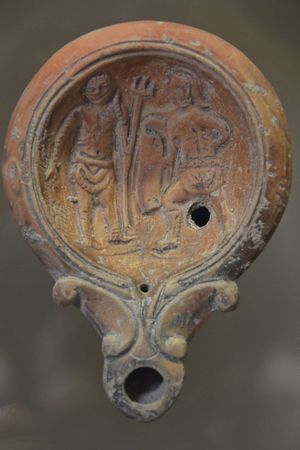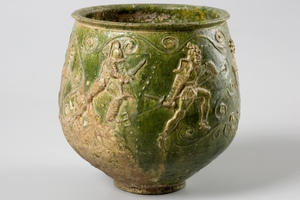Retiarius
A retiarius (Latin: retiarius) was a type of gladiator armed with a net (rete, retia) and trident (tridens, also referred to as a pitchfork - furcina), and almost unprotected by armor. The name literally translates as "fighter with a net," or "net-man". The net of a retiarius was round, about 3 meters in diameter, weighed down by lead weights on the edges, and possibly tied to the wrist by a rope. Additionally, the retiarius was armed with a pugio dagger, and sometimes used a quadrens - a four-pronged fork, to finish off a defeated enemy. Since one of the main weapons of the gladiator was throwable (the net), he was sometimes called a "jaculator," that is, "thrower". The protective gear of the retiarius consisted of a manica with a shoulder guard, sometimes fabric wraps on the legs (fasciae), and the clothing consisted of a subligaculum and balteus.
Retiarii were often featured in gladiatorial combat, as due to their specific gear, their tactics differed sharply from the typical behavior of sword-fighting gladiators, making these battles interesting to watch. The absence of a shield and helmet forced the net-man to constantly move during the fight, avoiding close attacks. With a successful throw of the net, the retiarius could entangle, knock down, and finish off the opponent. If the opponent caught the net and started to pull it towards himself, the retiarius could cut the rope with the pugio and free himself. With the trident, retiarii both attacked and parried the enemy's blows. Most often, retiarii fought against secutores and murmillo, such a battle symbolized the duel between a fisherman and a fish. Sometimes one retiarius was pitted against two secutores simultaneously, in which case they were placed on a special elevation. It should be noted that the retiarii were not popular with the public due to the lack of impressive gear and a rather cunning and insidious manner of fighting.
Equipment
Retiarius Equipment:
- Pugio, Quadrens
- Net
Traditionally, gladiators fought on sand, but when reconstructing the battle on a hard surface, it is recommended to use authentic shoes, such as kaligs.
Related topics
Gladiator, Manica, Balteus, Subligaculum, Pugio, Thracian, Secutor, Provocator, Murmillon, Shoulder Guard, Trident

 Gallery
Gallery






